What are you doing in the garden this time of year? I'm weeding asparagus beds, dealing with voles, caring for peonies, and seeing which plants from last season survived!
Hopefully, by now, you've picked up all the sticks around the yard and freed any spring bulbs from the fall leaves that were still hanging around. Spring soil is often squishy and moist. It's important not to step on garden beds, compacting the soil.
Which Plants Survived?
I love to see which plants from last season survived the winter. Sometimes it's not apparent until growth begins.
Spinach, Russian Kale, Garlic
It was such a long cold winter and crazy spring that I was surprised to find that my late fall plantings of spinach and red Russian kale made it through the winter with no protection other than deep snow cover. They have started to regrow giving us some early greens to add to a salad, and the garlic is starting to poke some green shoots up through the thick straw mulch that covers those beds.
Asparagus Bed
After I raked the old mulch and fronds left from last year, I picked out any weeds from the asparagus bed. Weeds compete with the asparagus plants for nutrients so it's important to keep on top of them. Unfortunately it looks like the voles have been busy tunneling here and there throughout the bed. I hope they have left a few roots so we can harvest at least a couple of the spears of this much anticipated crop started from seed several years ago.
Voles
Voles are one of the worst animal pests in our garden. We are able to fence out the large animals including deer, raccoons, woodchucks, and porcupines but voles do all their dirty work underground. Unlike moles who only eat meaty things like grubs and worms, voles eat everything, especially plant roots and they multiply rapidly. One female can have up to 15 litters of 1 to 11 babies each during her short, 18 month life span. Yikes! Along with the damage they do to plant roots, trees, and shrubs, they also can carry the bacteria that cause Lyme disease.
Flower Garden Clean Up
The perennials were looking pretty ugly since I leave them all winter but I could see new growth emerging. This is the right time to remove the winter mulch and prune them to the ground. The woody perennials (artemisia, buddleia, lavender) also get pruned back.
Peonies
I will never be accused of excessive tidiness in the house or in the garden but peonies are one flower that I do clean up around in the fall.
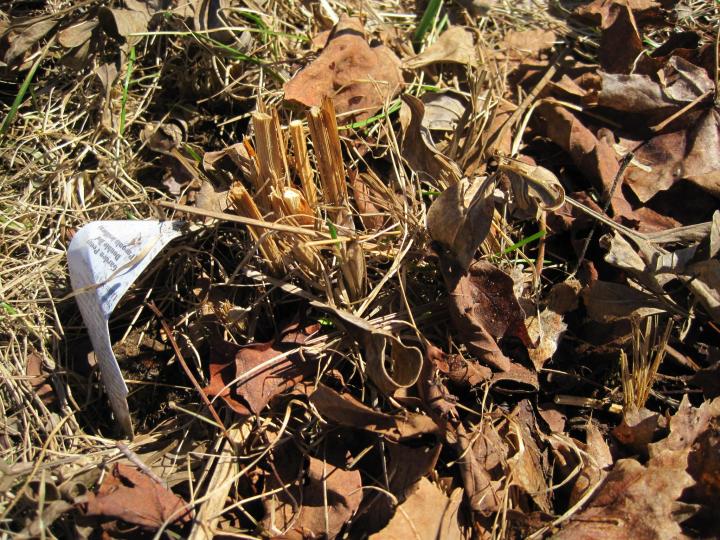
There are peony shoots in there somewhere!
To avoid carrying over disease spores I always remove all the old foliage so in the spring I only have to pull away the leaves that have blown in around the base of the plant.
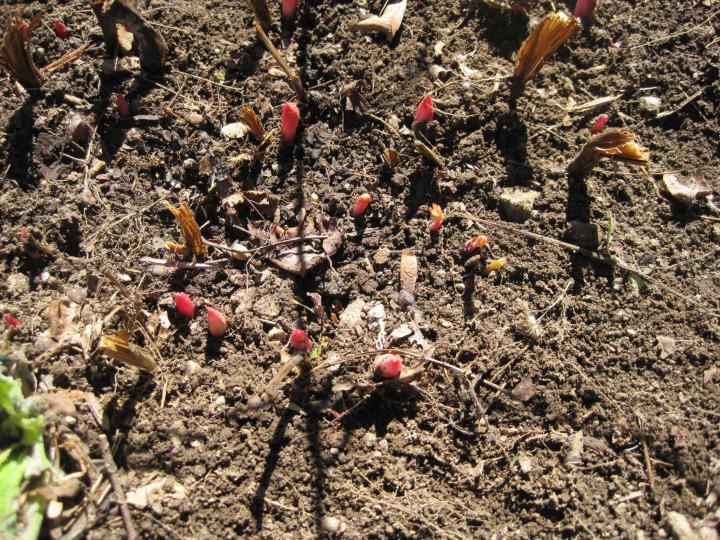
Even this early in the season, the peony shoots are starting to poke up their new red noses. I also take advantage of this time to scrape away any excess soil from around the plants that might have them buried too deeply to bloom well. The crown (where the roots and top meet) shouldn't be any deeper than 2 inches below the surface. See more about growing peonies.
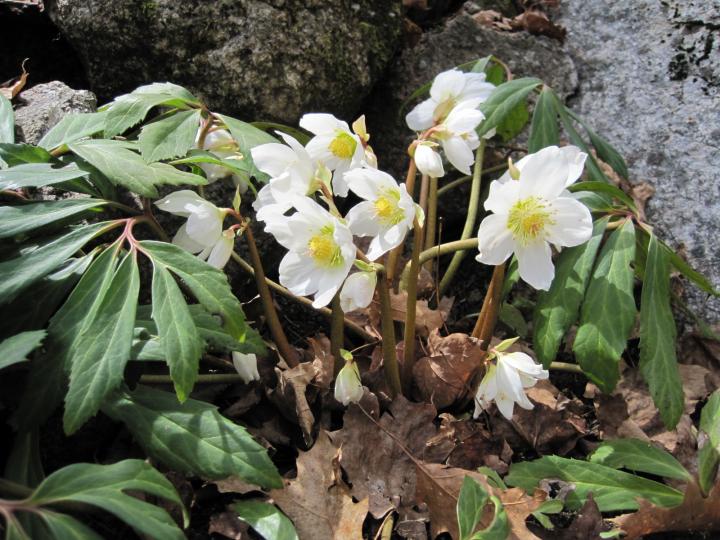
Hellebores were one of the first things to blossom in my garden, long before the daffodils and forsythia, so I make sure to clean up around them as soon as possible.
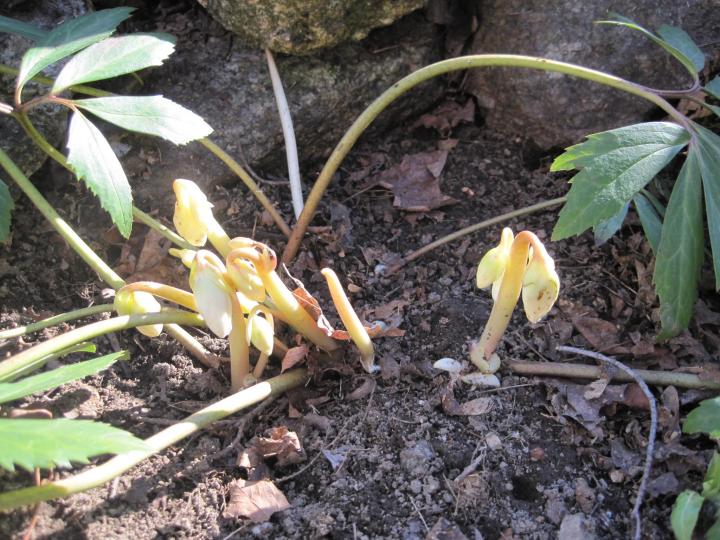
They are evergreen and have been quietly waiting to be released from the snow cover. I remove the rattiest of their leaves to make way for new ones. It is surprising how many seedlings they produce. Once they reach a good size I will move them to new spots around the yard.
Angelica
The angelica survived! It is a plant I have always admired in other people's gardens and this is my first time growing it. We started a few from seed last spring and transplanted them into my "new" garden with hopes they will self-seed and come back every year.
Self-Sowing Flowers
A lazy gardener, I encourage a lot of self-sowing flowers including foxglove, milkweed, money plant, linaria, and forget-me-nots. They have been reliable self-sowers for me, often popping up in unexpected places - one of life's pleasant surprises! This is a good time to be on the lookout for self-sown plants that can be moved to better locations in the garden.
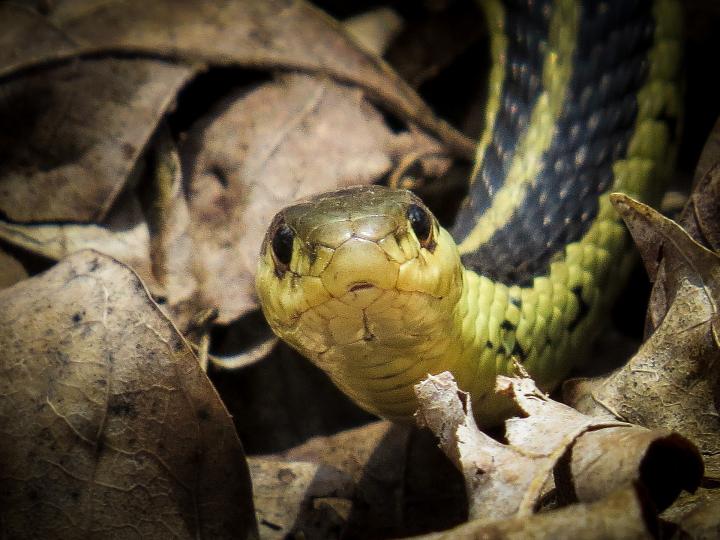
Garden Snake
Another pleasant surprise was the snake we disturbed when poking around in the garlic beds. If I was a snake I'd live near the garlic too. Unlike many gardeners I know who freak out at the thought of a snake we welcome them. They eat insects and maybe even a vole or two!
Violets
Since this is good time to weed I have been attacking the violets. They are one of my most invasive weeds, spreading by root and seed. They have their good points, pretty flowers, a nice touch for salads, but they are everywhere, squeezing out anything they grow near.
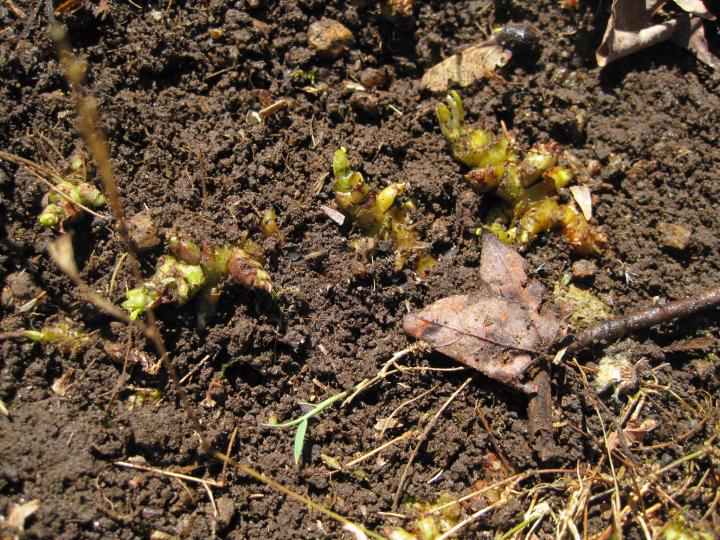
I try to dig out as many of their nubby roots as I can before they start to grow. A visitor to our garden once complimented me on the way I had planted my understory with violets. I had to laugh and sent her home with a trunkload to plant in her garden. I bet she is cursing me by now!
See the Almanac's article with 10 more tips for spring garden and yard cleanup.


















